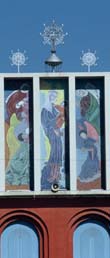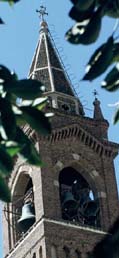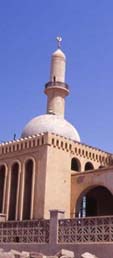| Religions in Eritrea |



Enda Mariam, Orthodox church Asmera / Roman Catholic Church, Asmera / Mosque
Massawa
The conversion of Axum to Christianity dates from the forth century A.D. when Syrian missionaries introduced a Monophysite doctrine to the Axumites. From a region which was approximately coextensive with modern Eritrea, the Christian kings of Axum extended their power and influence far afield.
In the sixteenth century the Turks under Selim I, sent their fleets into the Red Sea in 1517 and established initially feeble occupations at Massawa and Suakin (in the Sudan). In 1520, the Portuguese also landed at Massawa. Their followed years of warfare between the defenders of their respective faiths.
Another great power came in the person of the Imam of Harrar, Ahmad bin Ibrahim, better known as Ahmad Gran (the left-handed). In 1530 he began to attack the plateau. Within four years he laid waste to all of the Christian highlands, including Tigre and Eritrea. He converted hundreds of thousands to Islam by force. Only by surrender and conversion could people save their lives. The Christian nobility survived only as a hunted band.
Only the intervention of the Portuguese transformed the flow of events. They landed at Massawa in 1541 and helped the Eritreans and Tigre to drive the Imams forces from the plateau. The Muslim forces dispersed, retreated and disappeared.
In the nineteenth century the Italians began to bring Eritrea under their protection and introduced roman Catholicism.